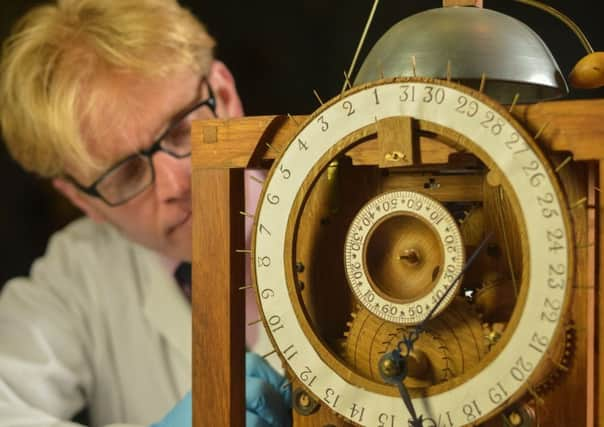Timeless clock is still accurate


The maritime masterpiece, crafted in 1727 by Foulby-born clockmaker John Harrison, was accurate to within a minute a week and could help sailors calculate longitude and thus measure their distance from land.
Its intricate, wooden mechanism still works perfectly – but in what might be seen as a timely warning about pale imitations, a faithful copy designed to show Harrison’s workings to the world has stopped dead.
Advertisement
Hide AdAdvertisement
Hide AdThe two clocks are displayed next to each other at Leeds City Museum, with the reproduction, which dates only from the 1970s, stripped of its face and cabinet.
Matthew Read, an expert in antique clocks, arrived on Tuesday to try to fathom why its works had ground to a halt.
“We’ll be investigating whether it’s dirty or if it needs some added lubrication,” he said.
Harrison, who was born on the Nostell Priory estate, created the “longcase clock No 2” and is credited with helping to solve the problem of accurate timekeeping on lengthy voyages.
Advertisement
Hide AdAdvertisement
Hide AdValued at around £2m, it was left to the city of Leeds by William Wyrill Sissons, in 1973.
Around the same time, an enthusiast was crafting a cog-for-cog reproduction of the clock, using the same self-lubricating African hardwood favoured by Harrison. It is on loan to Leeds from the National Maritime Museum.
“There’s a real, palpable sense of history when you look at these things,” said Mr Read, director of the Bowes Centre for Art, Craft and Design at Barnard Castle. “The original clock that Leeds owns is in incredibly good condition, and gives you a direct connection with the past.”
The clock was designed in the wake of a disaster in which 2,000 lives were lost, when four cargo ships ran aground in the Scilly Isles, having mistaken their position.
Advertisement
Hide AdAdvertisement
Hide AdThe government offered £20,000 to anyone who could come up with a way of measuring a ship’s position at sea.
Harrison became obsessed with the challenge, and set about making a clock that would keep time on long voyages.
The project took him 50 years to complete.